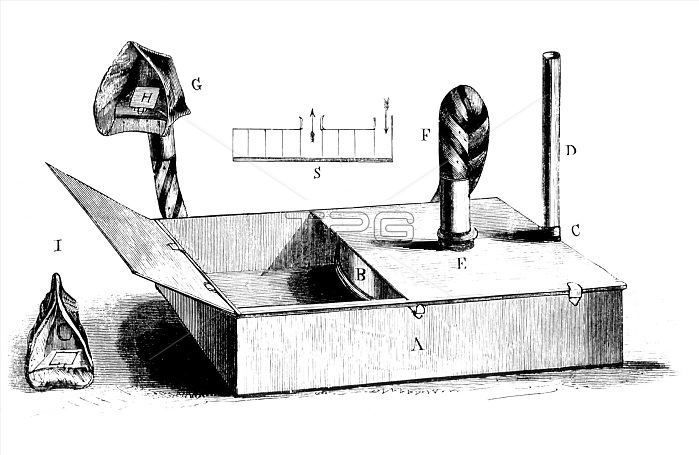
Within one month of the arrival of the news of anesthesia arriving in London, John Snow had investigated the properties of ether, established the concentrations required and designed, tested and published the results of using a vaporizing device. This 1847 engraving shows Snow's apparatus for the application of ether. A. Box of japanned tin or plated copper, of the size and form of a thick octavo volume, serving as a water-bath when the apparatus is in use, and at other times containing the elastic tube and face-pieces. Attached to this by clasps, and moveable at pleasure, is B. The spiral ether chamber, of thin tinned brass, or copper plated with silver. C. Opening in ditto for putting in and pouring out ether, and for screwing on, D. Brass tube, by which the air enters which the patient inhales. E. Another opening in ether chamber for screwing on F. Elastic tube about three feet in length. G. Face-piece. H. Inspiratory valve. I. The same face-piece compressed, to fit it to a smaller face. S. Section of spiral ether chamber, B. Anesthesia traditionally meant the condition of having sensation (including the feeling of pain) blocked or temporarily taken away. This allows patients to undergo surgery and other procedures without the distress and pain they would otherwise experience.
| px | px | dpi | = | cm | x | cm | = | MB |
Details
Creative#:
TOP22160469
Source:
達志影像
Authorization Type:
RM
Release Information:
須由TPG 完整授權
Model Release:
N/A
Property Release:
No
Right to Privacy:
No
Same folder images:

 Loading
Loading